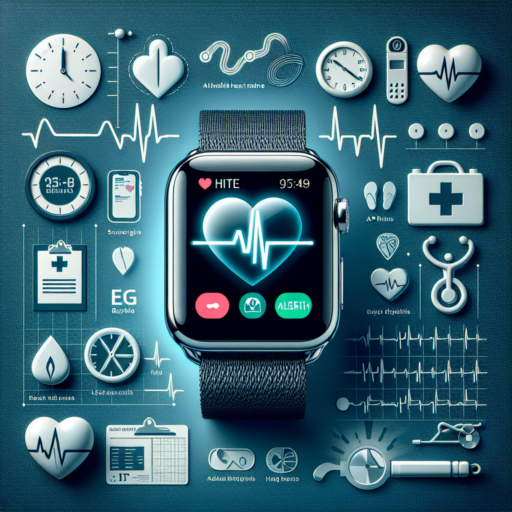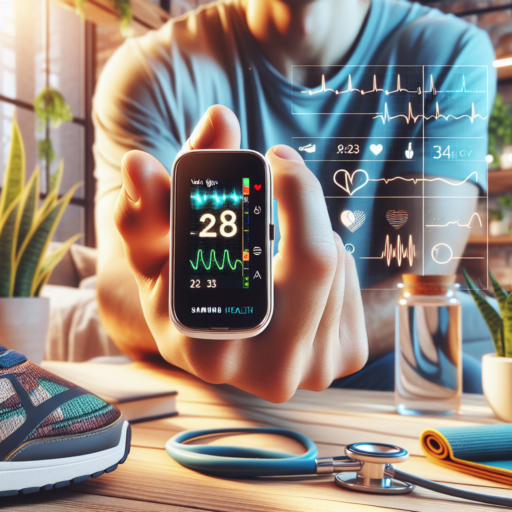Why is my Apple Watch giving me a low heart rate warning?
If you’ve recently encountered a low heart rate warning from your Apple Watch, it’s important to understand the technology and health monitoring systems behind this alert. The Apple Watch uses a heart rate monitor to track your pulse throughout the day. A low heart rate warning is triggered when the watch detects that your heart rate has fallen below a certain threshold, typically under 50 beats per minute for a period of 10 minutes when you appear to be inactive. This feature is designed to alert users of potential health concerns that may require attention.
This warning is part of the health and fitness monitoring systems integrated into your Apple Watch, aimed at helping users maintain an awareness of their physical well-being. It’s important to consider a variety of factors that could cause a low heart rate, such as high levels of fitness, sleep, or even potential medical conditions. Active individuals, for example, often have lower resting heart rates due to their efficient heart function. Meanwhile, if the warning occurs frequently and unexpectedly, it might signal an underlying condition that warrants a discussion with your healthcare provider.
Understanding your body’s signals and how technology can help monitor health is key to utilizing the Apple Watch to its full potential. While the device offers valuable insights into your physical state, it’s essential to approach these warnings with a balanced perspective, recognizing when to seek professional medical advice.
Should I worry about low heart rate notifications?
Receiving a notification about a low heart rate can be a startling experience. It raises immediate concerns about one’s health and whether urgent medical attention is needed. It’s understandable to feel anxious, but it’s essential to consider what these notifications actually mean and how they should be interpreted.
Understanding Your Heart Rate Notifications
Modern smart devices and fitness trackers are capable of monitoring heart rates 24/7. These devices are set to alert you when your heart rate falls below a certain threshold, typically around 50 beats per minute (bpm) while you’re awake and not in a state of deep relaxation or sleep. It’s important to remember that these thresholds can vary based on one’s fitness level and individual health condition. For instance, athletes often have a lower resting heart rate due to their high level of cardiovascular fitness.
When to Seek Medical Advice
If you receive a low heart rate notification, first assess how you feel. Symptoms such as dizziness, fainting, fatigue, or shortness of breath accompanying the alert may indicate a need for immediate medical attention. However, if you feel fine, it could be beneficial to monitor your heart rate over the next few hours and days to determine if the notification occurs frequently. Consistent notifications of a low heart rate, especially if accompanied by symptoms, should prompt a visit to a healthcare professional.
It’s also worth noting that factors like stress, sleep quality, and physical inactivity can influence your heart rate. Therefore, a one-off notification may not necessarily signal a serious problem but rather a momentary dip in your heart rate. Keeping a log of these notifications and any potential external factors can be helpful when discussing your heart health with a doctor.
No se han encontrado productos.
Will my Apple Watch alert me if my heart rate drops?
Your Apple Watch is not just a device for telling time or receiving notifications; it also acts as a personal health monitor right on your wrist. A common question among users is whether their Apple Watch can alert them if their heart rate drops below a certain threshold. The simple answer is yes; the Apple Watch is designed with a variety of health monitoring features, including the capability to monitor heart rates and send alerts if it goes above or below certain levels.
How the Apple Watch Monitors Heart Rate
The Apple Watch uses green LED lights paired with light‑sensitive photodiodes to detect the amount of blood flowing through your wrist at any given moment. This technology, known as photoplethysmography, enables the device to calculate your heart rate. When the heart beats, there is a larger flow of blood in your wrist, and the green light absorption increases. Between beats, it decreases. The Apple Watch uses this data to determine your heart rate and can alert you if it detects unusually high or low rates based on thresholds you can customize in the Health app on your iPhone.
Setting Up Low Heart Rate Notifications
To get started with heart rate alerts, you’ll need to set up your thresholds in the Apple Watch app on your iPhone. Here’s a simple step-by-step guide:
- Open the Apple Watch app on your iPhone.
- Tap My Watch > Heart Rate.
- Under the «Low Notifications» option, set the threshold. The default is 45 beats per minute, but you can adjust this based on your doctor’s advice or personal preference.
Once these steps are completed, your Apple Watch will monitor your heart rate continuously, and if it falls below the threshold you’ve set, you’ll get a notification prompting you to check your rate or take appropriate action. It’s an invaluable tool for keeping an eye on your heart health and ensuring that you’re alerted to potential issues as soon as they arise.
How accurate is low heart rate on Apple Watch?
When it comes to monitoring heart rate, the Apple Watch is lauded for its precision and reliability, especially in tracking varied metrics that offer insights into one’s overall health. The accuracy of detecting low heart rate on an Apple Watch has been a subject of much interest among users and health enthusiasts alike. This feature is particularly crucial for individuals looking to monitor conditions such as bradycardia or simply to keep an eye on their cardiovascular health.
Apple’s heart rate sensor uses photoplethysmography technology. This method employs green LED lights paired with light‑sensitive photodiodes to detect the amount of blood flowing through the wrist at any given time. The sensor’s ability to accurately measure low heart rate hinges on various factors including the fit of the watch, the steadiness of the wearer, and external interferences. These elements can impact the sensor’s performance, hence affecting the accuracy of the data recorded.
Factors Influencing Accuracy
- Fit and Position: The watch needs to be snug but comfortable on the wrist, allowing the sensor to maintain constant contact with the skin.
- Physical Activity: High-intensity movements or workouts might lead to sporadic readings, thus affecting the accuracy during such times.
- Environmental Conditions: Extremely cold temperatures can cause the blood vessels to constrict, potentially skewing the readings.
It’s essential for users to understand that while the Apple Watch provides incredibly useful health monitoring tools, the precision of low heart rate readings may vary based on the outlined scenarios. For individuals concerned about their heart rate numbers, it’s recommended to consult healthcare professionals for comprehensive evaluations and to use the Apple Watch as a supplementary tool rather than a standalone diagnostic device.




